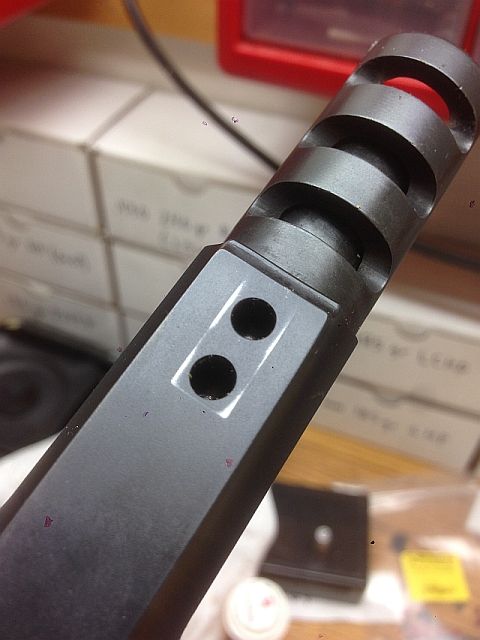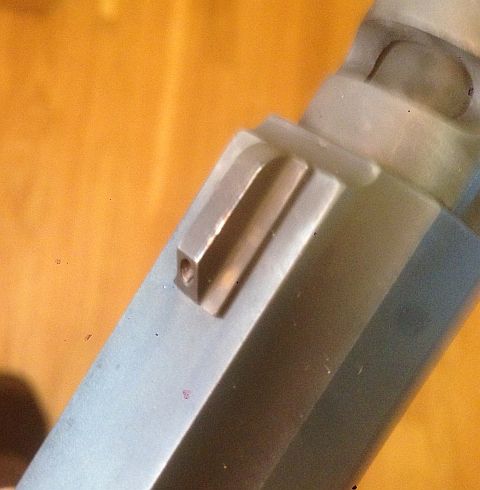Front sight was wobbling all over the place while at the range today. Packed up and went home, and discovered just now those aren't socket head screws holding that thing down. So, I assume they used a mandrel and press to stake the two little bosses on the sight to hold it in place.
Have you had this problem and if so, how did you fix? This is a real puzzler--without resorting to goos or epoxies and without building a mandrel to reach up into the two recesses in the slide, I'm a little lost on how to fix this. Gotta wonder why they didn't use a traditional dovetail that's worked flawlessly for a couple of centuries now. I'm thinking of taking the slide to the local dude and doing the dovetail...but then of course I'd have to find a sight. Jeeeeez.
Have you had this problem and if so, how did you fix? This is a real puzzler--without resorting to goos or epoxies and without building a mandrel to reach up into the two recesses in the slide, I'm a little lost on how to fix this. Gotta wonder why they didn't use a traditional dovetail that's worked flawlessly for a couple of centuries now. I'm thinking of taking the slide to the local dude and doing the dovetail...but then of course I'd have to find a sight. Jeeeeez.


